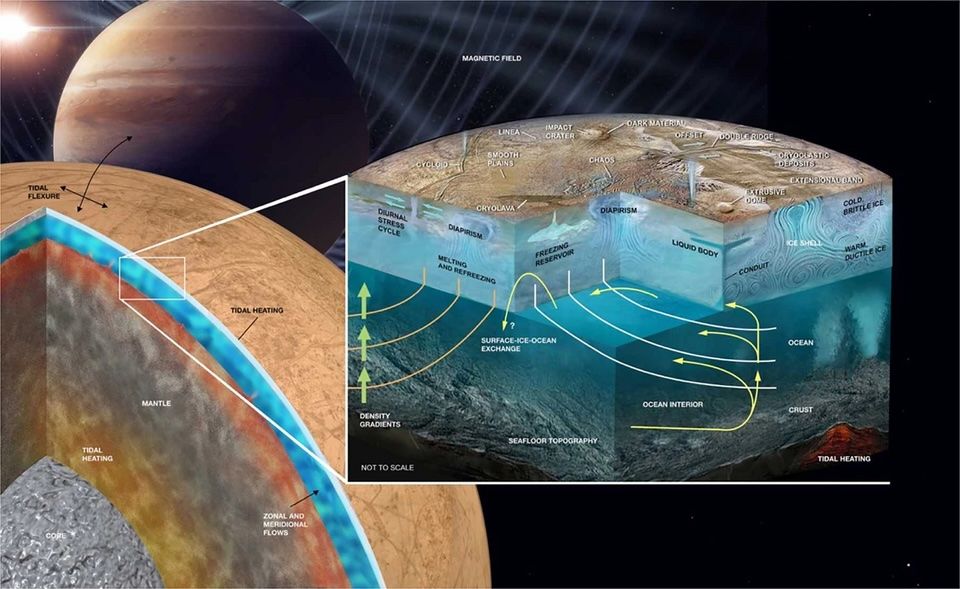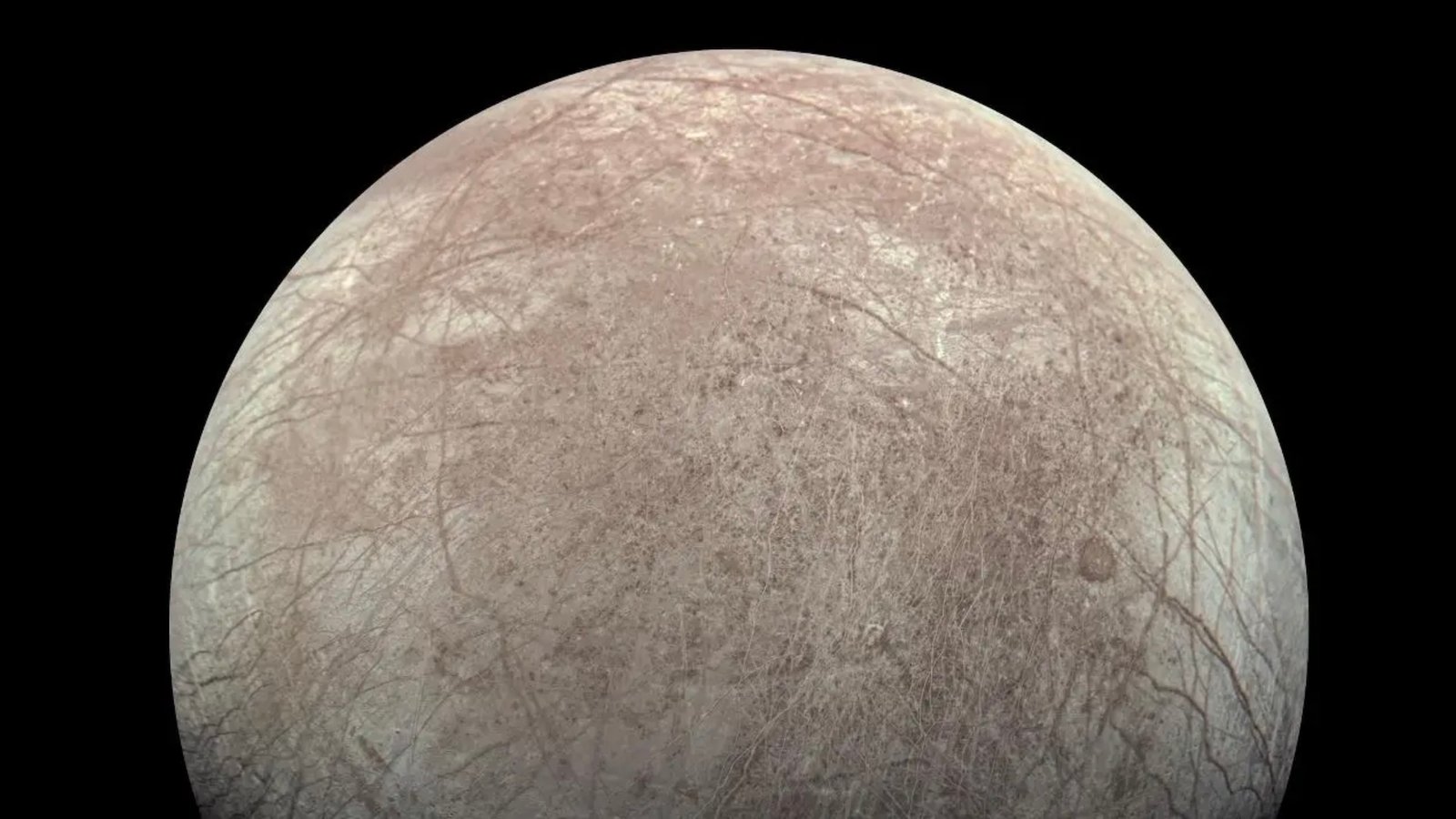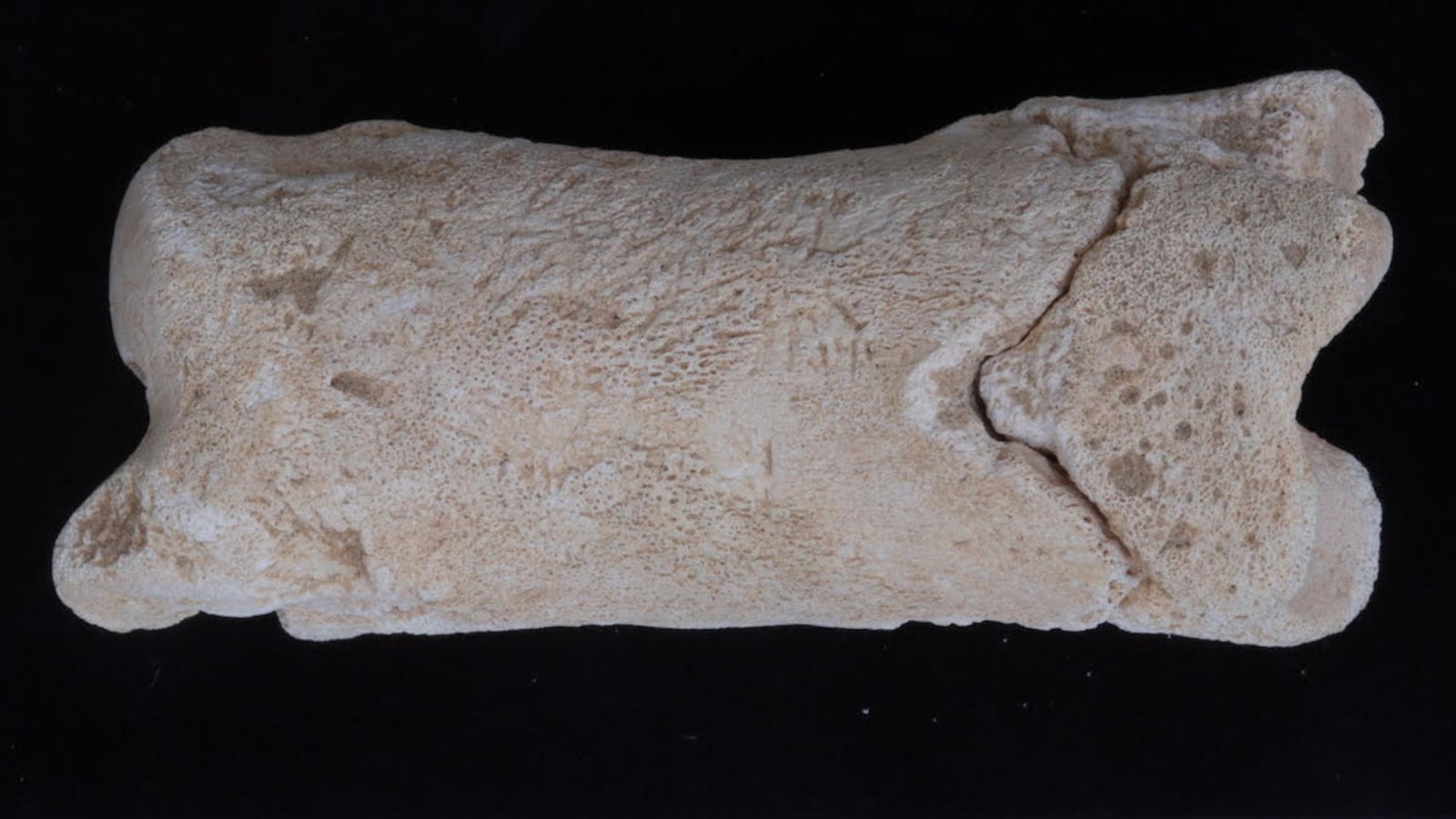You’d think that icy worlds are frozen in time and space because they’re — well — icy. However, planetary scientists know that all worlds can and do change, no matter how long it takes. That’s true for Europa, one of Jupiter’s four largest moons. Recent observations made by the James Webb Space Telescope (JWST) zero in on the Europan surface ices and show they’re constantly changing.
Dr. Ujjwal Raut of the Southwest Research Institute (SWRI) reported on the changes reflected in the JWST studies. Not only does Europa’s surface have amorphous ice, but there’s evidence of crystalline ice scattered around there. That indicates the presence of an active water source, such as the subsurface ocean. It also points toward geologic processes that affect the surface. The changes seen at Europa are very short-term, perhaps two weeks in some places.
“Our data showed strong indications that what we are seeing must be sourced from the interior, perhaps from a subsurface ocean nearly 20 miles (30 kilometers) beneath Europa’s thick icy shell,” said Raut. “This region of fractured surface materials could point to geologic processes pushing subsurface materials up from below. When we see evidence of CO2 at the surface, we think it must have come from an ocean below the surface. The evidence for a liquid ocean underneath Europa’s icy shell is mounting, which makes this so exciting as we continue to learn more.”
What happens to Europa
As a Galilean moon, Europa orbits near the planet and within its strong magnetic field. Thus, the surface gets bombarded by radiation. It is tidally locked, meaning it shows the same face to Jupiter as it orbits. Europa has a rocky and metallic interior, covered by an ocean and topped by an icy shell that’s fairly young in geological terms. It appears to be no more than 180 million years old. That tells us it has been resurfaced from within. JWST’s spectral studies of the surface show that the ice crystallizes in different ways in various places. Generally, water ice freezes into hexagonal crystals. That’s what we see on Earth when it snows or when rain freezes. However, Earth’s surface is largely protected from outside influences such as radiation and the ice stays in crystalline form much longer.
On Europa, charged particles trapped in Jupiter’s magnetic field bombard the surface. That disrupts the crystalline structure of the ice, turning it into amorphous ice. If that’s all that ever happened to Europa’s surface, you’d expect to see amorphous ice everywhere. Instead, the JWST spectral studies showed evidence of crystalline ice. There are also other surface “units”, such as ridges and cracks. Radiation doesn’t explain them, but other processes can create them. Combined with the new data collected by JWST, Raut said they are seeing increasing evidence for a liquid ocean beneath the icy surface.
Resurfacing Europa
Scientists thought that Europa’s surface was covered by a very thin (perhaps half a meter thick) layer of amorphous ice protecting crystalline ice below. The new evidence of crystalline ice on the surface also shows up in other areas, especially an area known as the Tara Regio. According to co-author Richard Cartwright of the Johns Hopkins Applied Physics Laboratory, the surface may be different than expected in places. “We think that the surface is fairly porous and warm enough in some areas to allow the ice to recrystallize rapidly,” said Cartwright. “Also, in this same region, generally referred to as a chaos region, we see a lot of other unusual things, including the best evidence for sodium chloride, like table salt, probably originating from its interior ocean. We also see some of the strongest evidence for CO2 and hydrogen peroxide on Europa. The chemistry in this location is really strange and exciting.”
Related: How many moons does Jupiter have?
The CO2 found in this area includes the most common type of carbon, with an atomic mass of 12 and containing six protons and six neutrons, as well as the rarer, heavier isotope that has an atomic mass of 13 with six protons and seven neutrons. That raises questions about the origin of the CO2. “It is hard to explain, but every road leads back to an internal origin, which is in line with other hypotheses about the origin of 12CO2 detected in Tara Regio,” Cartwright said.
Sources of water and resurfacing
So, how is water forced to the surface? There are two main sources of heat at work: tidal heating and radioactive decay at the core. Both of these processes warm the subsurface ocean and force water to the surface. What causes the chaotic terrain seen at Europa in such places as Tara Regio? There are several possible ways. One way is through the formation of chaos regions — those places that appear to be cracked and jumbled. They could be the result of material forcing its way via diapirs (think of them as stovepipes from below that convey warmer water and slush up to the surface). Once that water gets to the surface, it freezes rapidly into the crystalline ice JWST detected. The water also brings up dissolved CO2 and other materials.

Another method for water delivery to the surface is through plumes. These geysers shower the surface with ice grains. Other mechanisms that could be forming crystalline ice are migration from other parts of the surface and impact exposure. Impacts are well known to “garden out” fresh ice in a short period of time. Such a collision may well explain the ice seen at Tara.
This resurfacing with crystalline ice is relatively short-lived. That’s because the constant bombardment of charged particles works immediately to create amorphous ice. The authors of the paper (see below) state that the charged particle-driven process that changes the ice may work in as little as 15 days on Europa’s leading hemisphere. In other places, that might work faster. So, given that Europa is constantly refreshing its surface and charged particles are rapidly breaking that ice down, Europa is a busy, constantly changing place. The upcoming Europa Clipper mission should be able to study these regions in more detail during its many close passes of this tiny moon.
The original version of this article was published on Universe Today.




